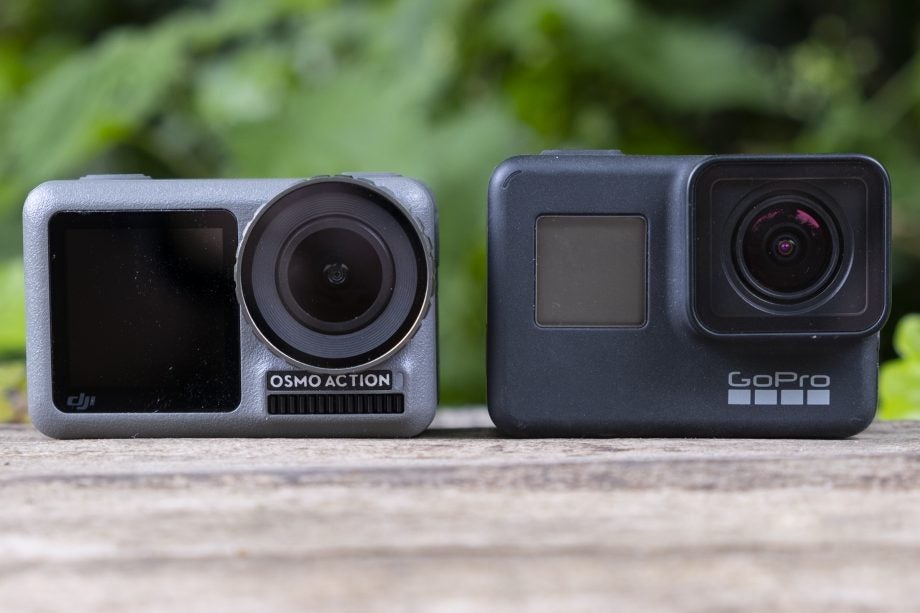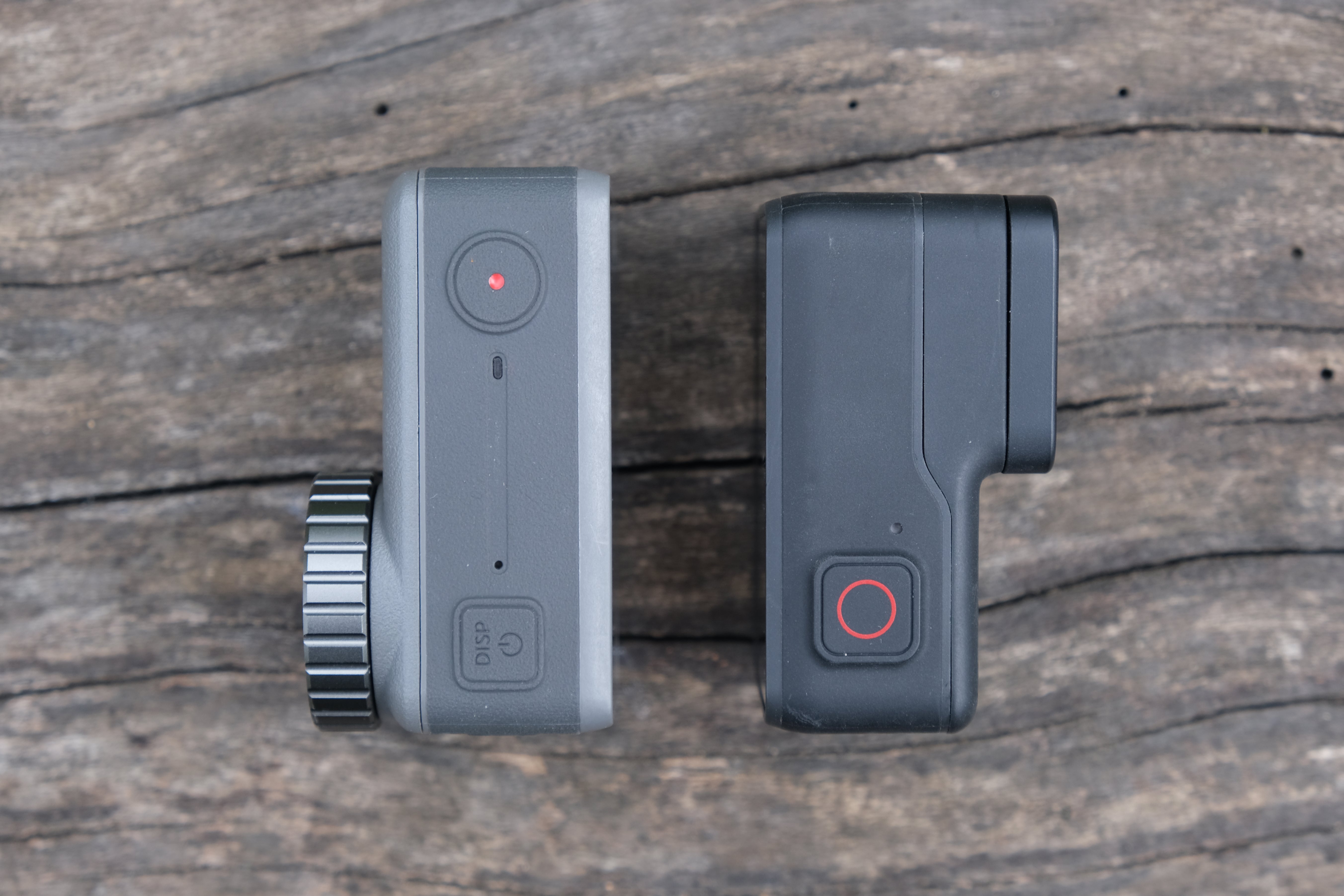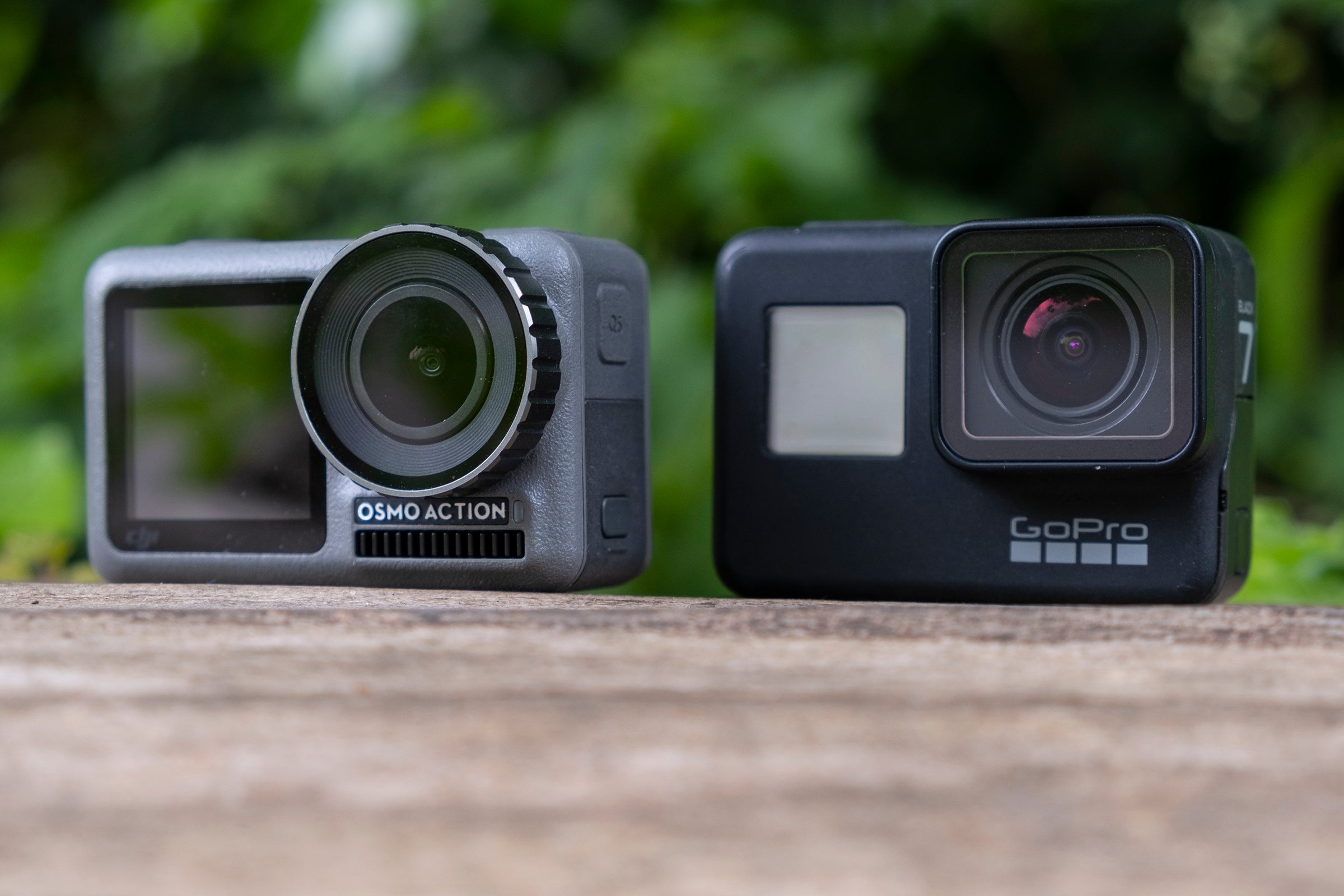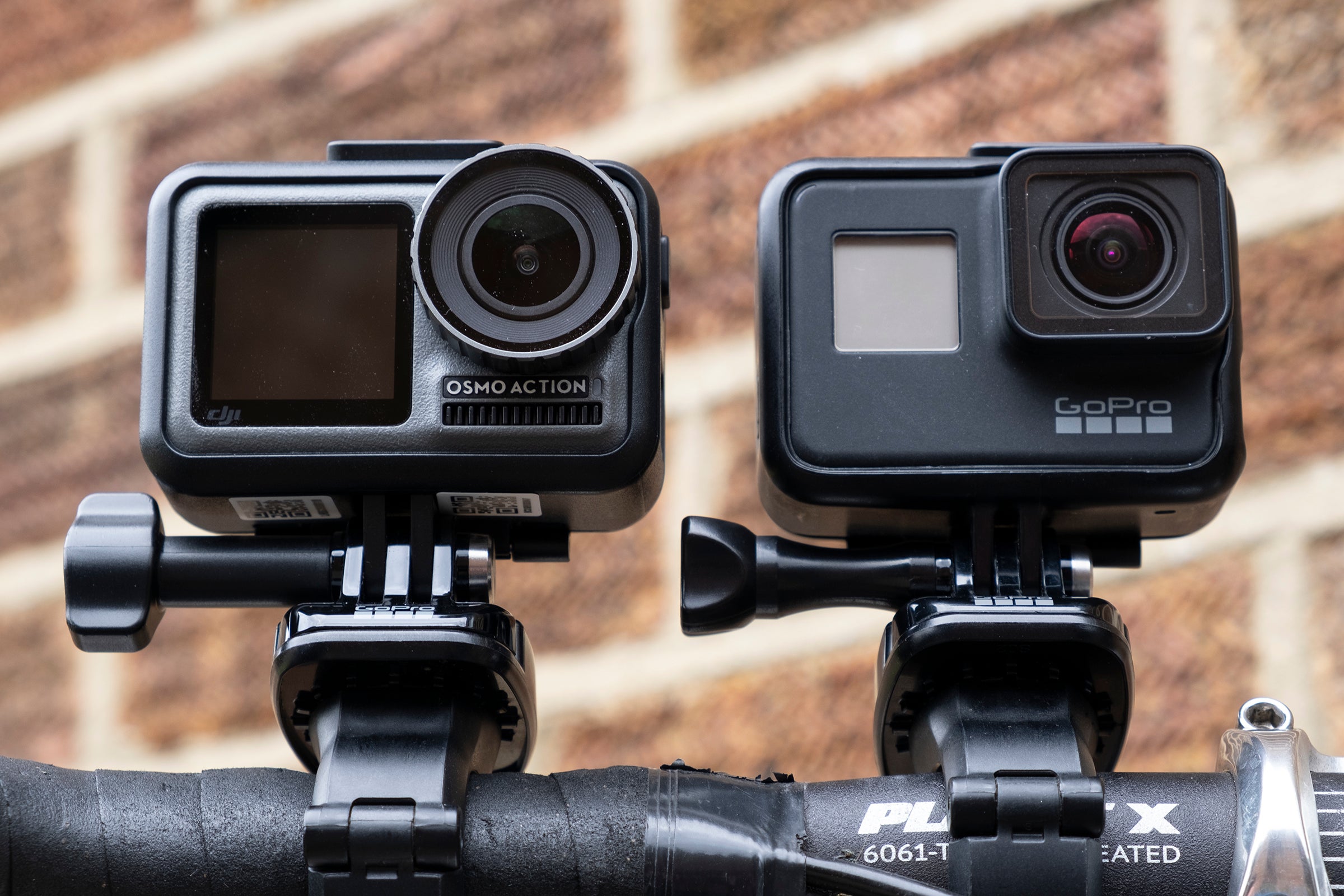DJI Osmo Action vs GoPro Hero 7 Black: which action camera should you buy?

Smartphone cameras are pretty incredible these days, but there’s just one problem – they’re not very extreme. Most are either too slippery to risk taking white water rating, lack full waterproofing, or are impossible to mount in remotely interesting ways.
Enter the action camera. They might sound a bit ‘2014’, but these fun-loving, near-indestructible cameras are still great allies to have on outdoor adventures and travel holidays.

Since September 2018, the GoPro Hero 7 Black has been our favourite action camera. Its incredible HyperSmooth stabilisation, ability to shoot 4K video at 60fps and handy apps helped lift it above its cheaper rivals.
But now it’s got fresh competition for its ‘best 4K action camera’ title in the form of DJI’s Osmo Action. The drone maker has taken a break from ruling the skies to see if it can topple GoPro on the ground, and the Osmo Action brings competitive specs, electronic image stabilisation and a front-facing screen for vloggers.
So which one should you buy for your extreme adventures? We’ve tested both cameras side by side to bring you all the answers.
Related: DJI Osmo Action review
DJI Osmo Action vs GoPro Hero 7 Black – Design and usability
In the hand, the GoPro Hero 7 Black feels a bit more polished than the Osmo Action, but the latter is the slightly more practical and user-friendly camera – particularly if you like vlogging.
While keeping your face in the frame is not difficult with a wide-angle camera like this, its front screen makes lining up the horizon and fitting in multiple people a cinch.
GoPro’s Hero 7 Black has a mini monochrome screen similar to those seen on the top plates of high-end DSLR cameras. It tells you few important details, like the battery life and duration of the current clip. These are handy to know while shooting, but the DJI Osmo goes further. Its full colour front display lets you see the scene as you shoot, albeit with a slight lag.

There are a couple of other small wins for the the Osmo Action. Its rear screen is both larger than the Hero 7 Black’s and has a true 16:9 ratio, meaning no black bars in playback. Add these to the snappier touchscreen interface and handy QuickSet button for switching modes, and DJI’s action cam feels a bit more refined.
Also, while it is possible to change the Hero 7 Black’s lenses, the Osmo Action’s screw-on system is a little easier, making it a tad simpler to swap in an ND filter or a new lens cover.
The two cameras are otherwise very similar, with two microphones, removable batteries and almost identical weights, but the Osmo Action’s extra usability means it just edges this round.
Winner: DJI Osmo Action
DJI Osmo Action vs GoPro Hero 7 Black – Specs and features
On paper, there’s very little to separate the Osmo Action and Hero 7 Black.
Both have near-identical sensors that can shoot 4K video at up to 60 frames per second, while 2.7k, 1080p and 720p modes are available if you want to keep file sizes smaller for easier uploading.
Here’s a full comparison of the most important specs to show how close it is:
| DJI Osmo Action | GoPro Hero 7 Black | |
| Sensor | 1/2.3-inch CMOS 12-megapixels | 1/2.3-inch CMOS 12-megapixels |
| Max video resolution | 4K/60fps | 4K/60fps |
| Max video bitrate | 100Mbps | 78Mbps |
| HDR video | Yes (stabilisation not available) | No |
| Video stabilisation | Electronic (RockSteady) | Electronic (HyperSmooth) |
| Still photos | 12-megapixel (AEB) | 12-megapixel (HDR) |
| Slo-mo speed | 8x (1080p/240fps) | 8x (1080p/240fps) |
| Waterproofing | 11 metres | 10 metres |
| Voice control | Yes | Yes |
| Removable battery | Yes | Yes |
| Livestreaming | No | Yes |
| Other special modes | Timelapse, Hyperlapse, Mimo My Stories | Timelapse, TimeWarp, QuickStories |
There are, though, a few small differences that could swing your decision either way, depending on how you like to shoot. In the Osmo Action’s favour, there’s its ability to push the shutter speed up to 1/8000s or down to 120 seconds in manual mode, which will appeal to more advanced videographers who want to freeze action in bright conditions or do long exposure photos.
Related: Best Camera Deals for Amazon Prime Day UK
Unlike the Hero 7 Black, the Osmo Action also has an HDR video mode. This isn’t quite as useful as it sounds, though – you don’t get Rocksteady stabilisation in this mode, which means it needs to be reserved for times when the camera’s very stable, and the difference HDR brings to the image is relatively minor.
The Hero 7 Black also has a few little tricks up its sleeve that you won’t find on its rival. There’s GPS for overlaying data, like speed, over your videos (strangely absent on the Osmo Action), the option to livestream videos to sites like YouTube via your phone, and an HDMI out port for hooking it up to your TV.
With a few jabs landing from either side, this round is a draw.
Winner: Draw
DJI Osmo Action vs GoPro Hero 7 Black – Video and image quality
Both of these cameras shoot impressively detailed 4K video, and which one you prefer will partly come down to personal taste around their processing.
The GoPro tends to boost the saturation and sharpening by default, giving its videos a brighter, punchier look, but this can border on looking slightly unrealistic at times.
Still, they’re not completely equal in terms of quality in all modes. The GoPro Hero 7 Black is a little better at handling motion during 4K capture. DJI’s processing can obfuscate fine natural texture, like grass, which can make parts of the image appear to shimmer slightly at high speed.
It’s an effect of the camera’s attempt to separate detail from noise, and GoPro handles this with a little more naturalistic flair.
This reverses at 1080p, though. The GoPro Hero 7 Black’s Full HD footage looks more manipulated. Techniques used to enhance contrast and tonal contours are effective, but they also end up simplifying fine detail in the distance. And that detail is clearer in the DJI Osmo images.
Two different resolutions, two different sets of the results. It shows that the interpretation of what a camera sensor sees is almost as important as the sensor itself.
One other small difference between the two is in their hyperlapse modes – you can see below that the Hero 7 Black’s ‘Timewarp’ mode is superior in terms of stabilisation and smoothness.
And stills? Aside from some slight colour temperature differences the Hero 7 Black and DJI Oslo take photos of similar quality.
While dynamic range optimisation isn’t quite as strong as that of today’s top-end phones, they balance shadow detail and overexposure of the brightest areas well.
Winner: Draw
DJI Osmo Action vs GoPro Hero 7 Black – Stabilisation
GoPro introduced Hyper Smooth stabilisation with the Hero 7 Black. This is next-generation electronic stabilisation, but it still uses image data outside that seen in the final footage to buffer jolting movement.
It’s fairly similar to the DJI Osmo’s EIS and both offer superb smooth results.
Out on a run, the GoPro and DJI remove the shock of footfalls to make your videos look much more professional. The Osmo goes a little further than the Hero 7 Black, countering more directional movement for an even stabler look.
Results are similar when strapping the cameras to the judder-fest of a bike riding off-road too.
You see occasional micro wobbles in the footage from the Hero 7 Black and Osmo. However, reviewing the videos frame-by-frame this seems to be caused by motion so rapid it actually blurs that single exposure. The only way to avoid this without optical image stabilisation would be to scrap that frame altogether and create a new interpolated one based on the surrounding frames.
It’s not the stabilisation’s fault, unless you expect techniques that don’t exist in action cameras. Yet.
Overall, stabilisation is roughly evenly matched, and excellent in both cases.
Winner: Draw
DJI Osmo Action vs GoPro Hero 7 Black – The Verdict
Those who were expecting the DJI Osmo Action to take action cameras to the next level will be surprised to find that its battle with the GoPro Hero 7 Black is extremely close – so close, that it’s difficult to pick an outright winner.
Still, there are slight differences that’ll sway you one way or the other. The Osmo Action has four advantages – its vlogging-friendly front screen, the greater flexibility of its manual mode, the fact that it’s the most user-friendly action cam around, and its slightly lower price.

But it’s not an obviously superior action camera to the GoPro Hero 7 Black, and the latter fights back with three wins of its own. These include a livestreaming mode, better companion apps, and (right now) a bigger range of accessories.
With video quality and stabilisation largely on a par, your decision between the two will likely come down to which of these added features you prefer. With a price that’s currently £50 lower than the GoPro Hero 7 Black, we think the Osmo Action just edges it overall, but there’s certainly still very much a place for GoPros.
Additional reporting: Andrew Williams


